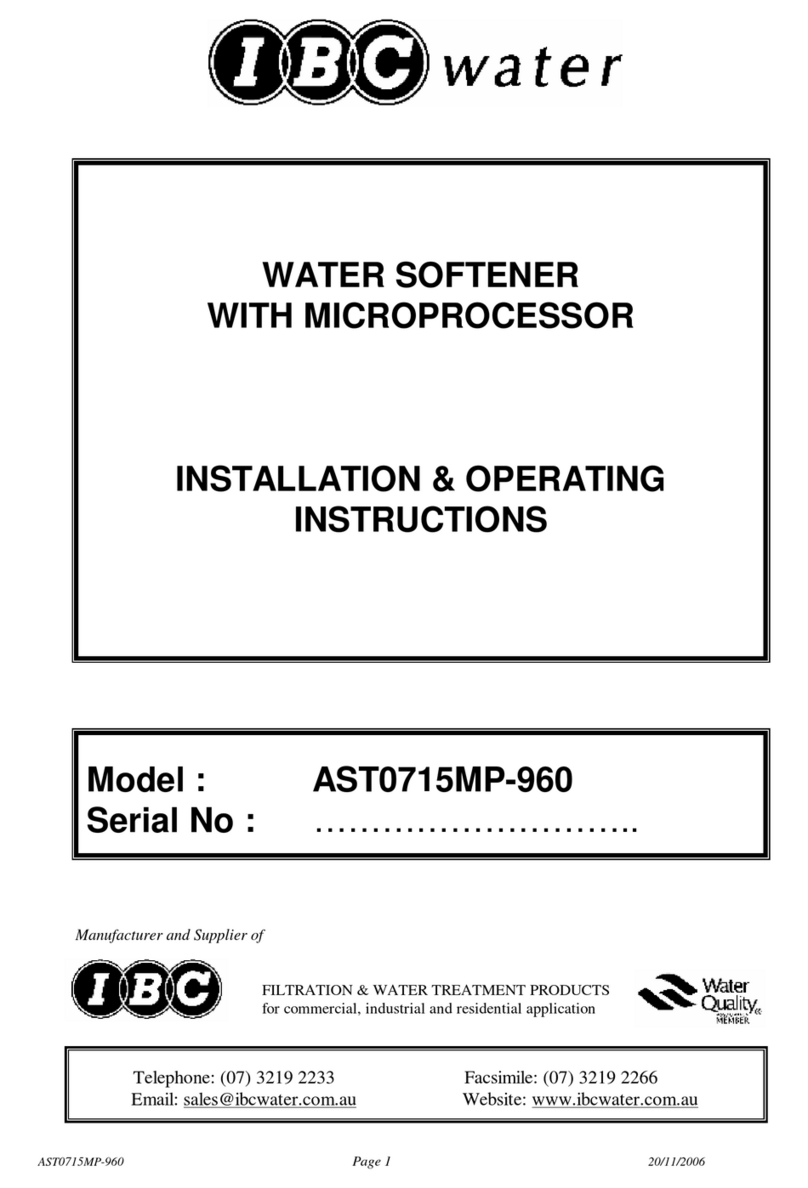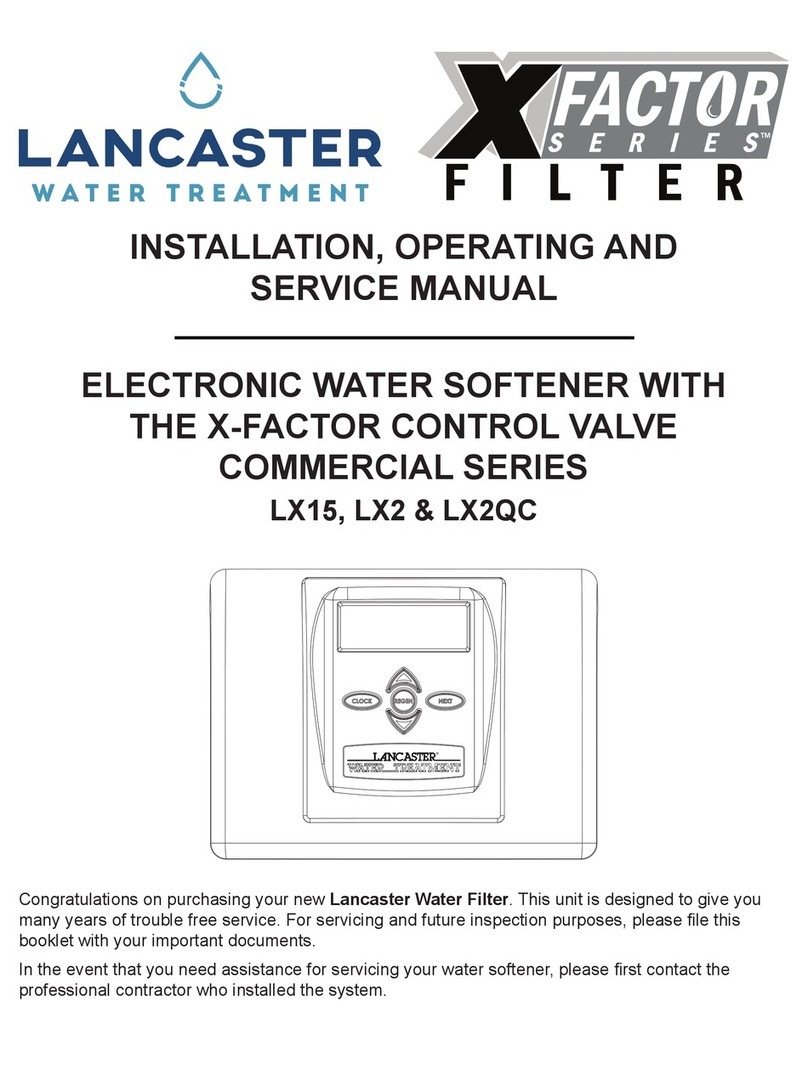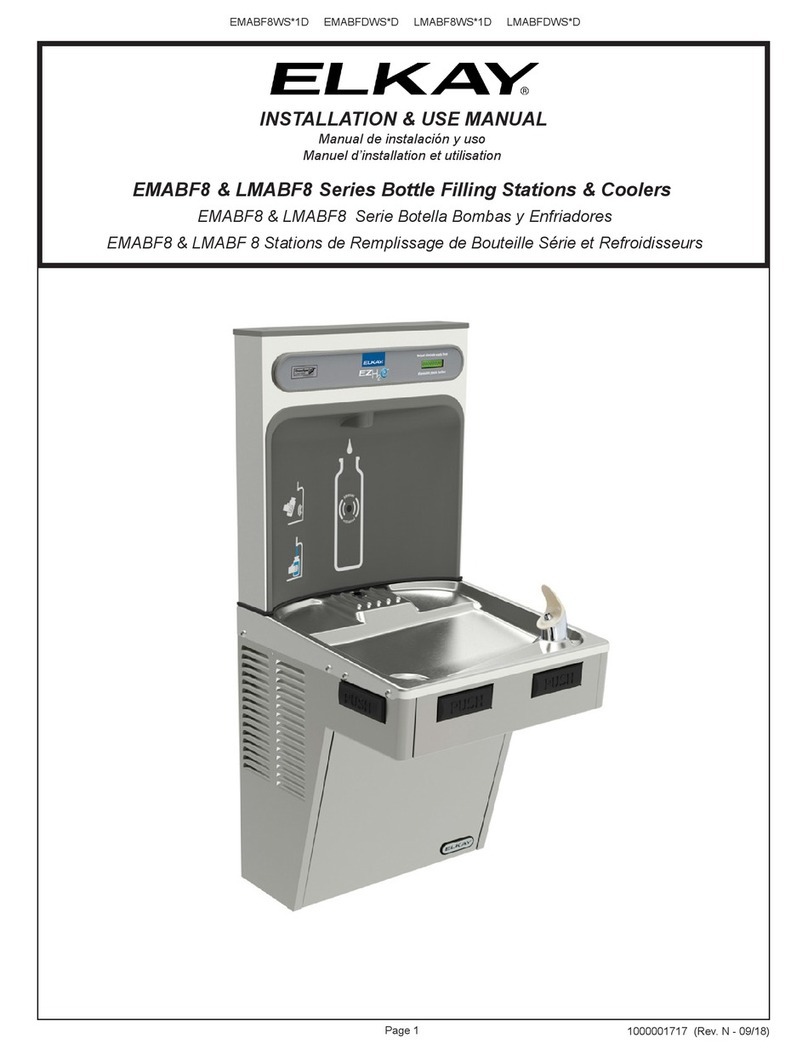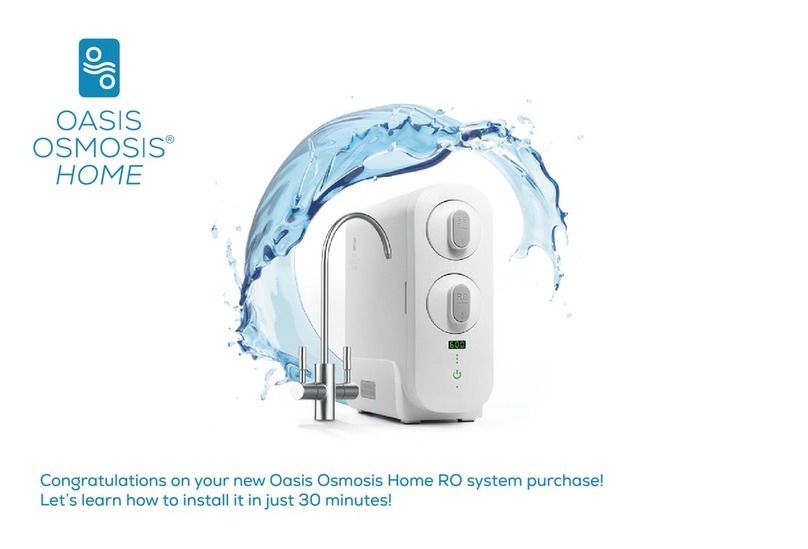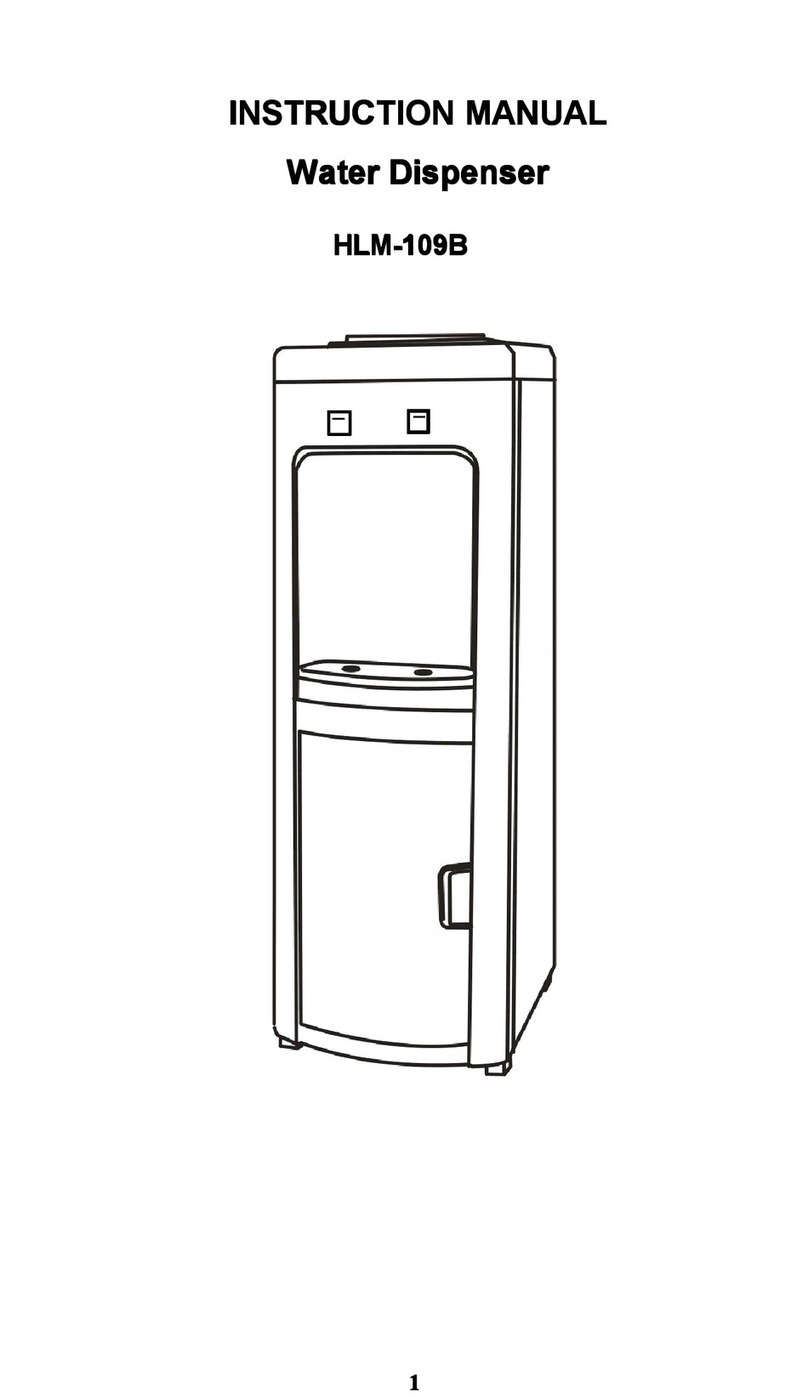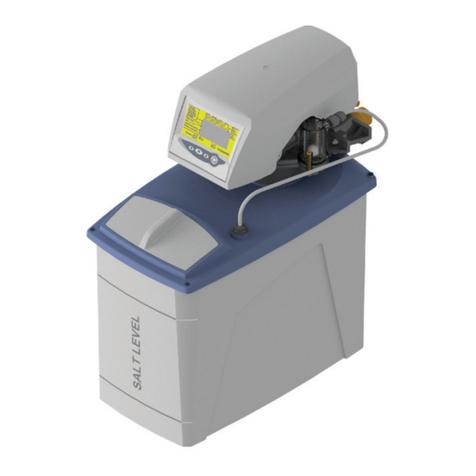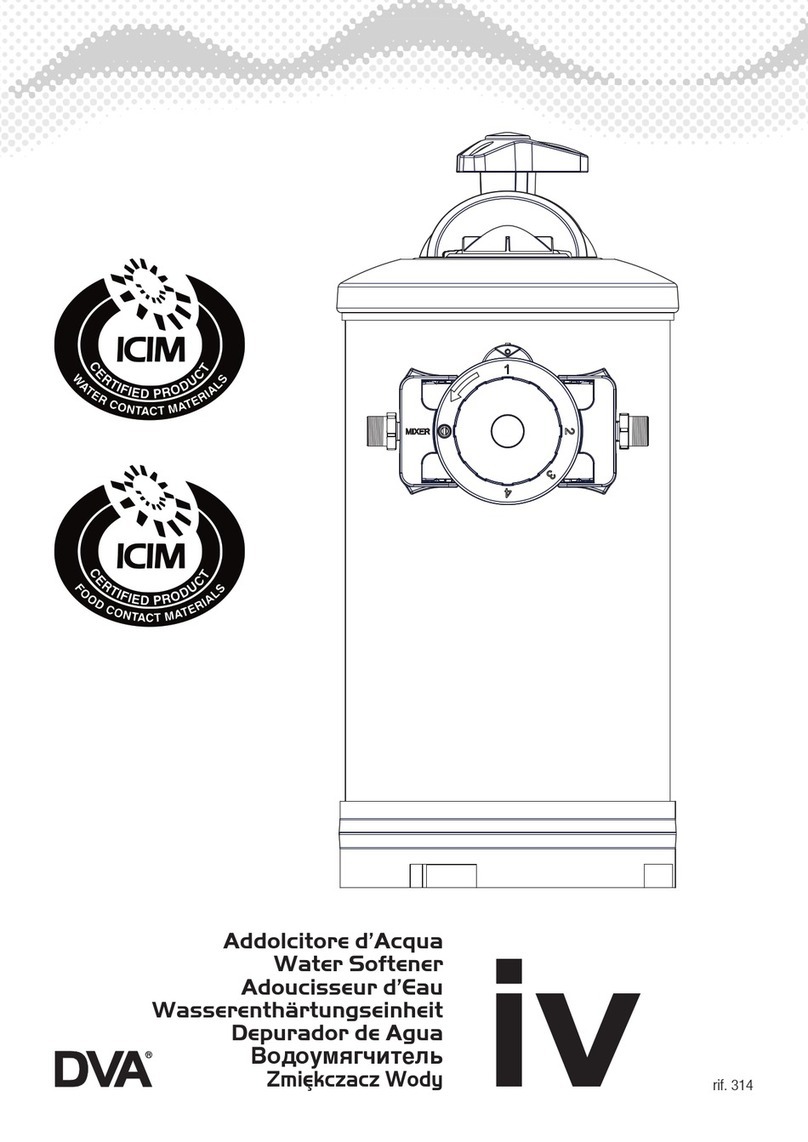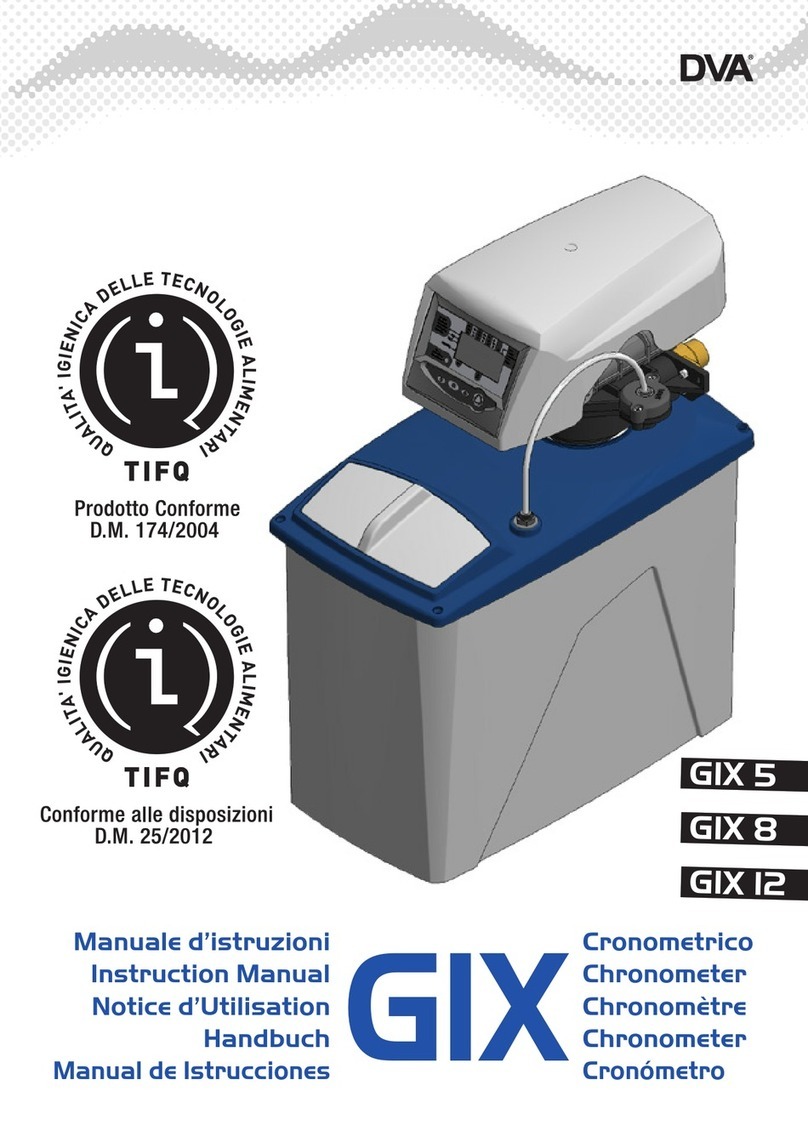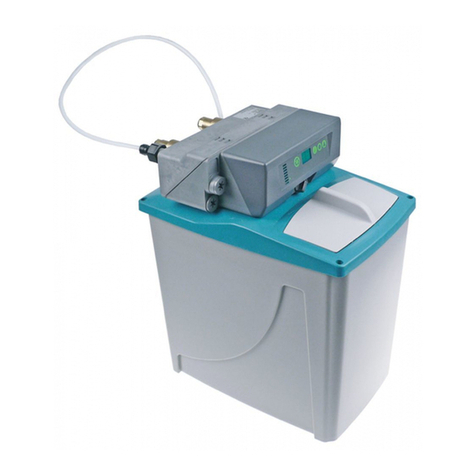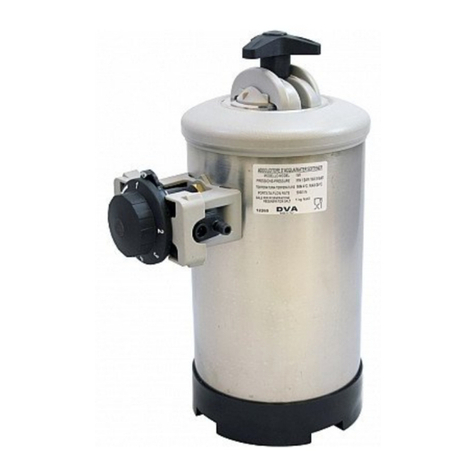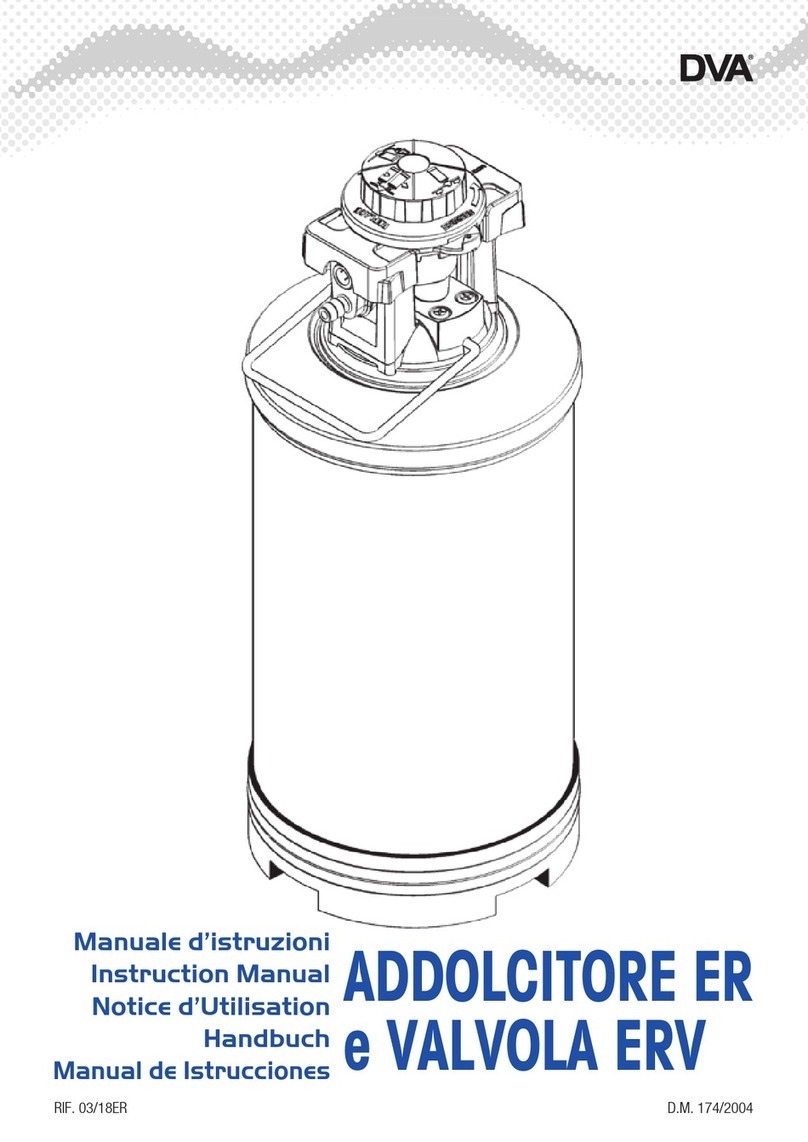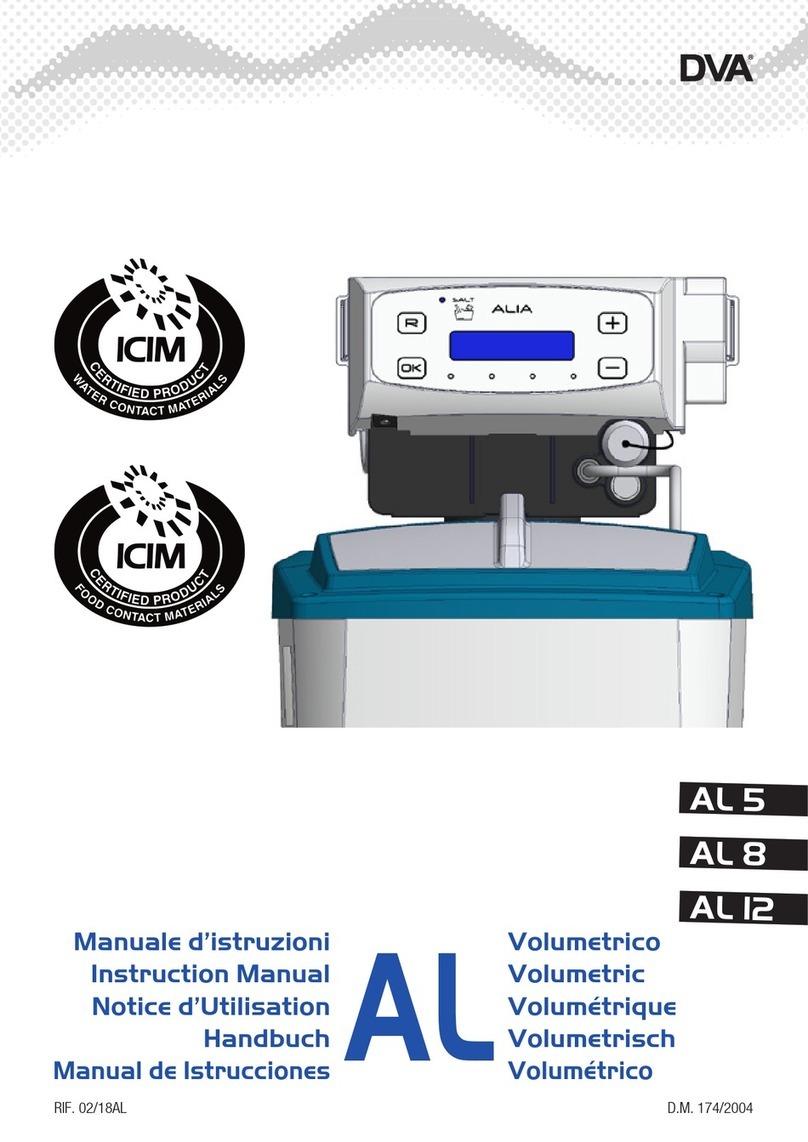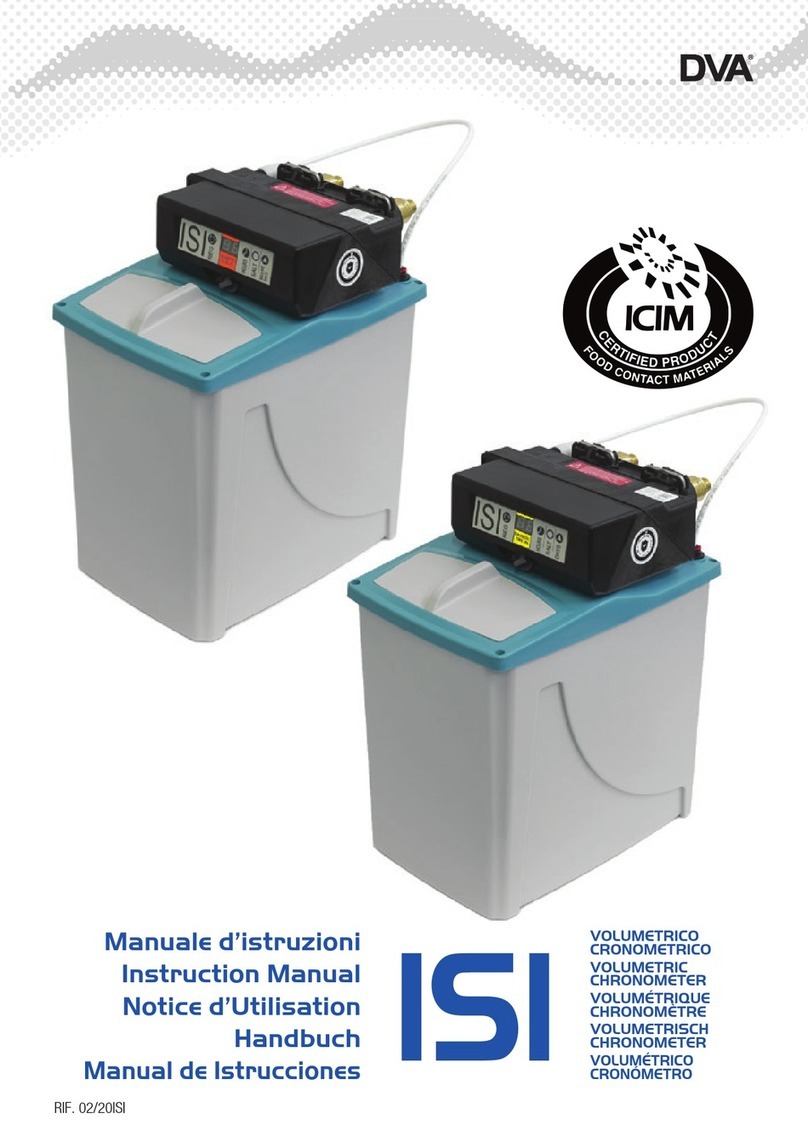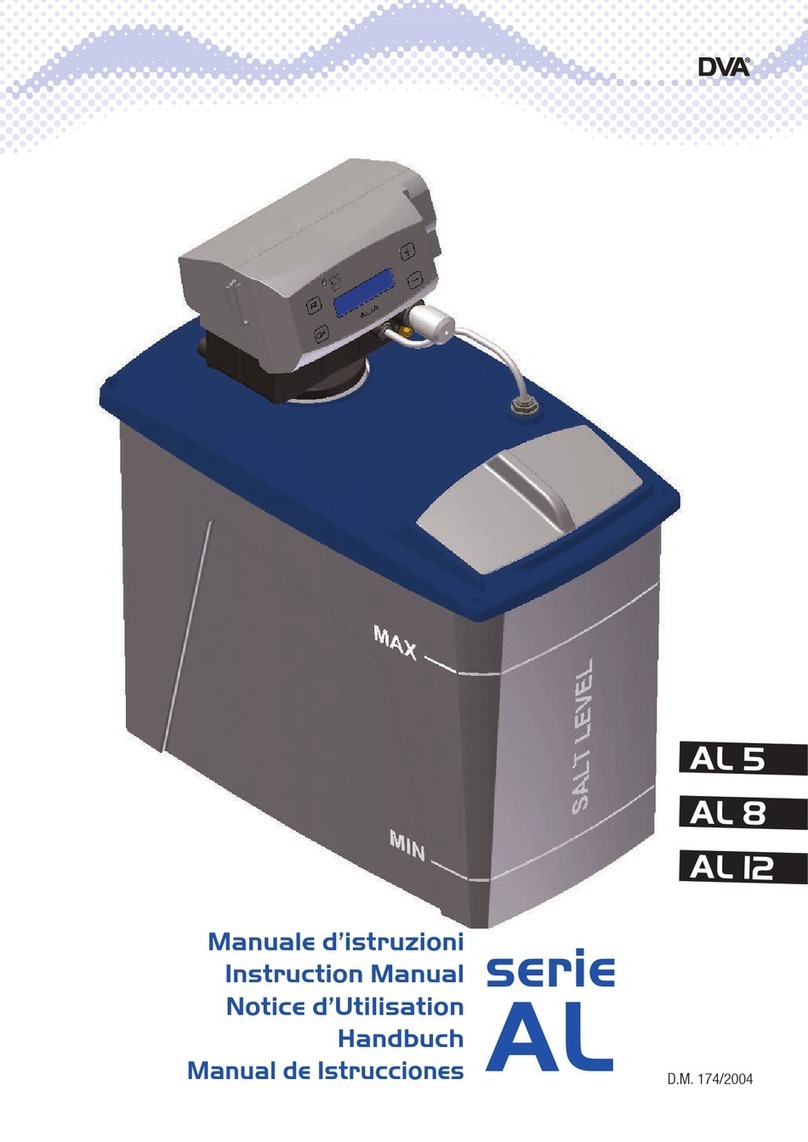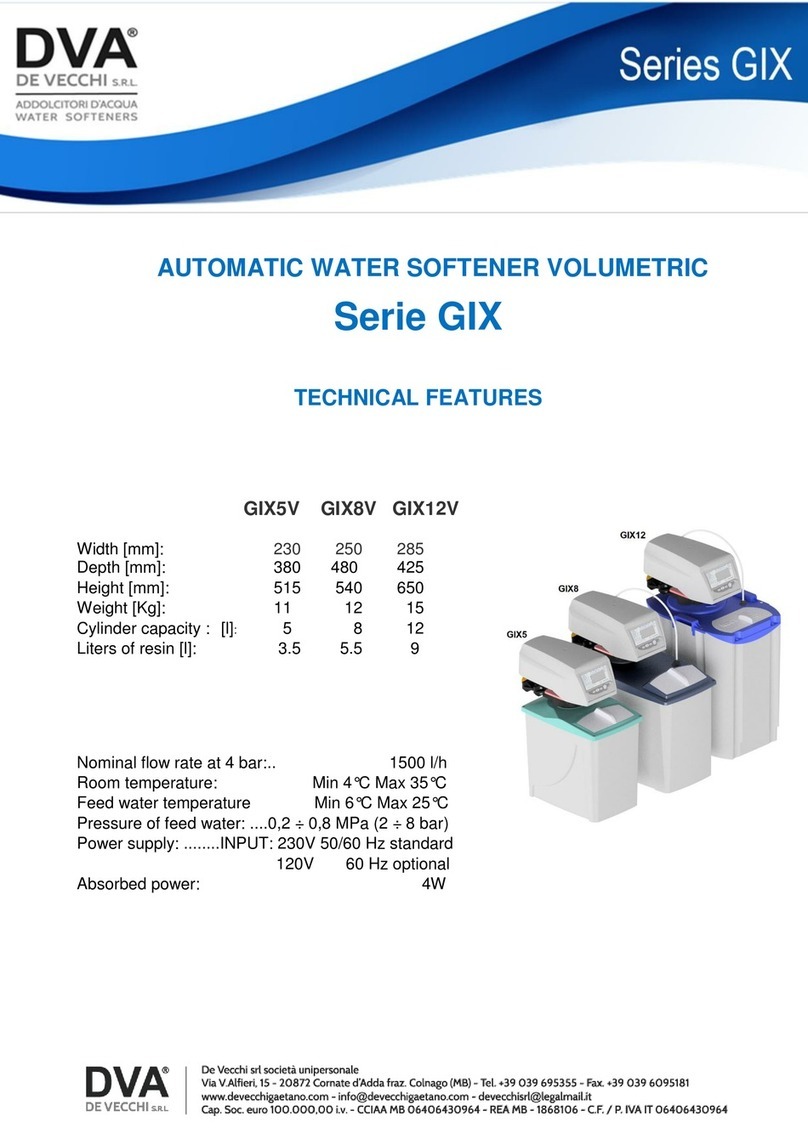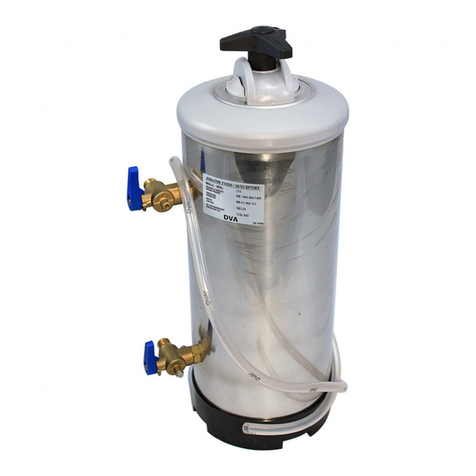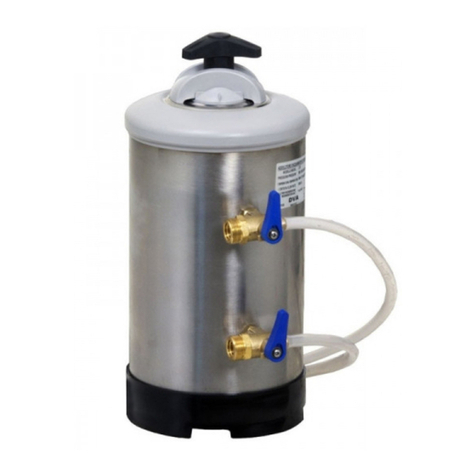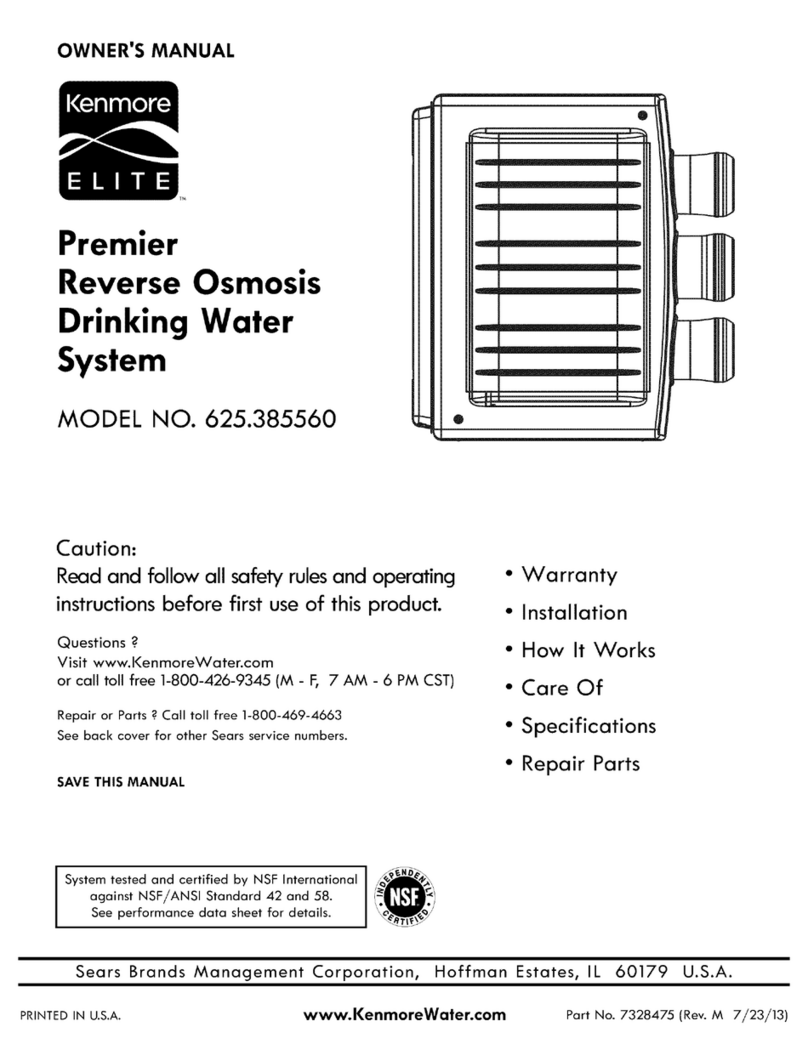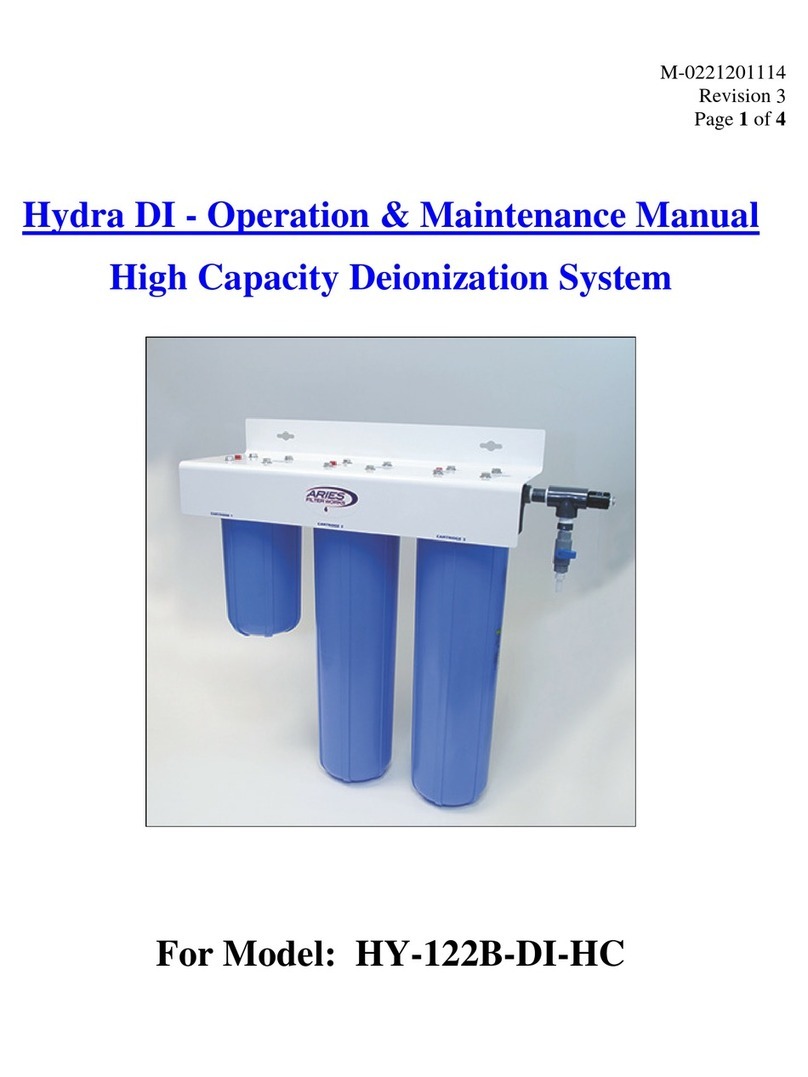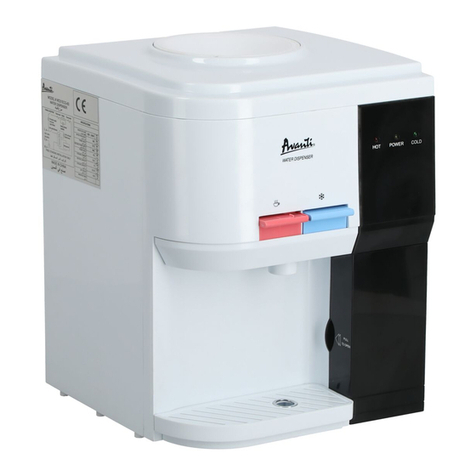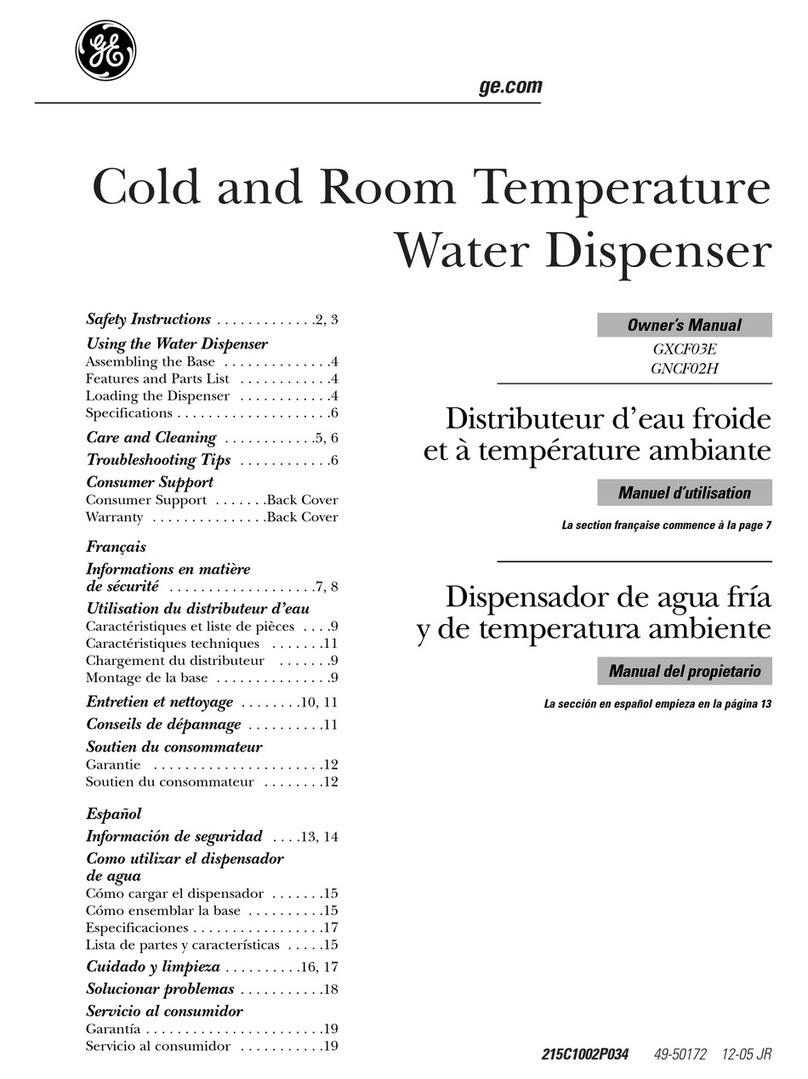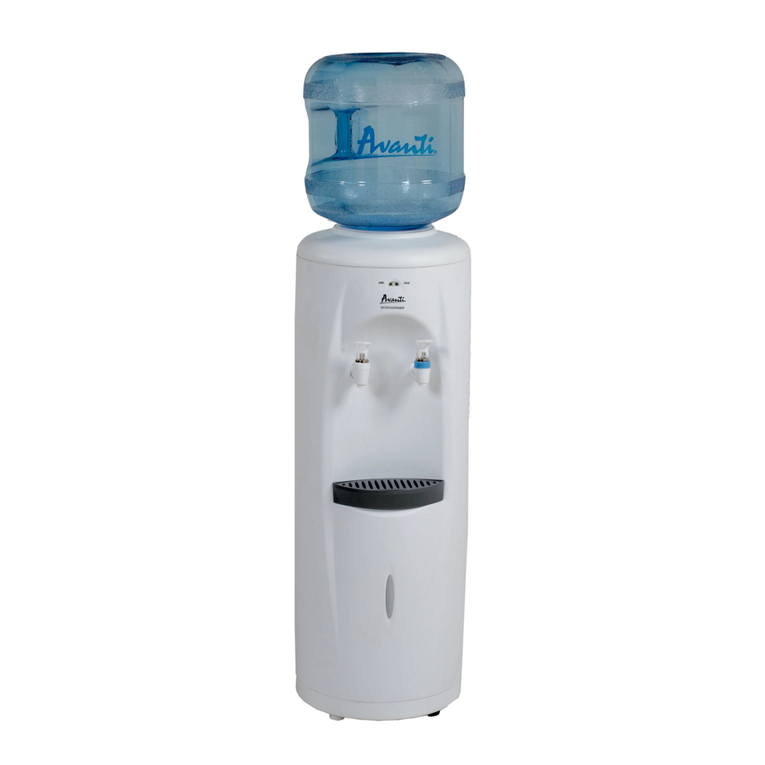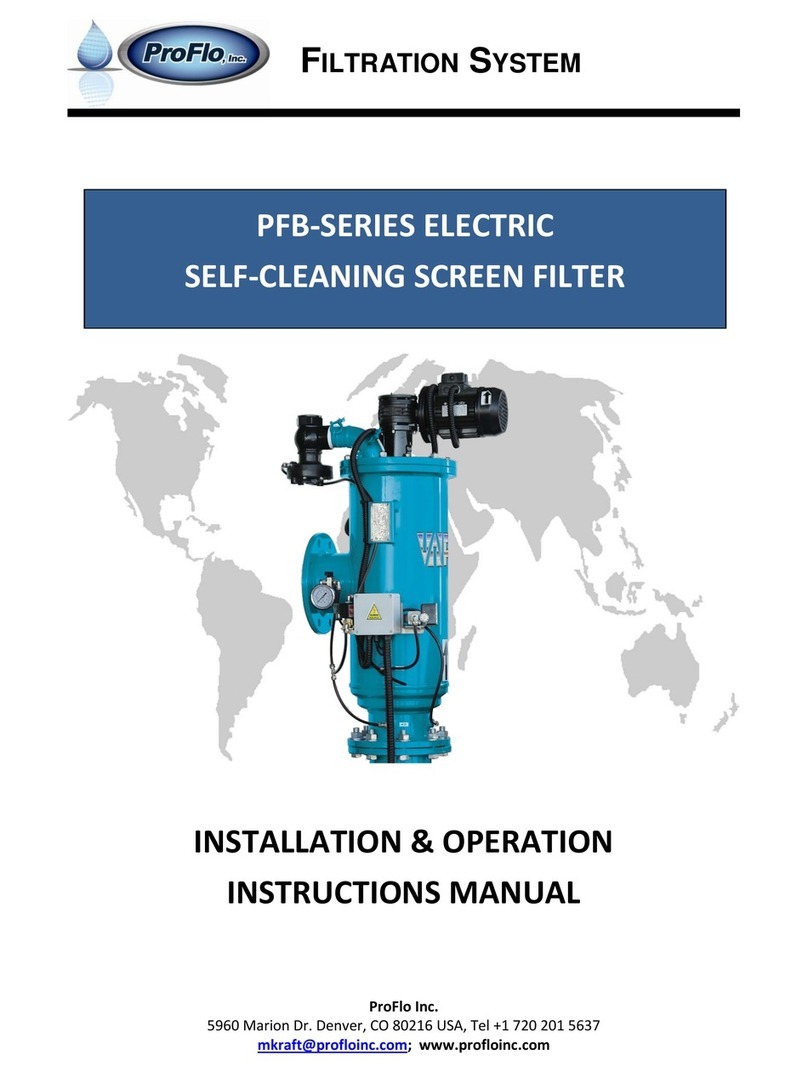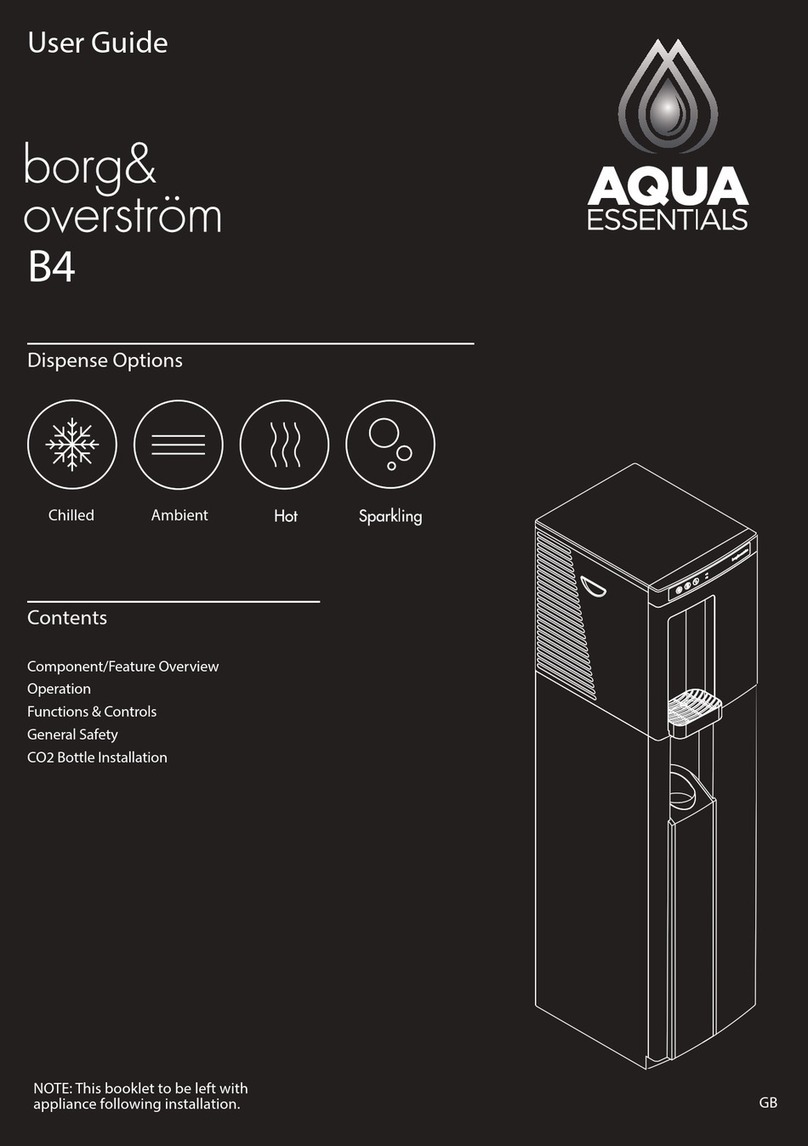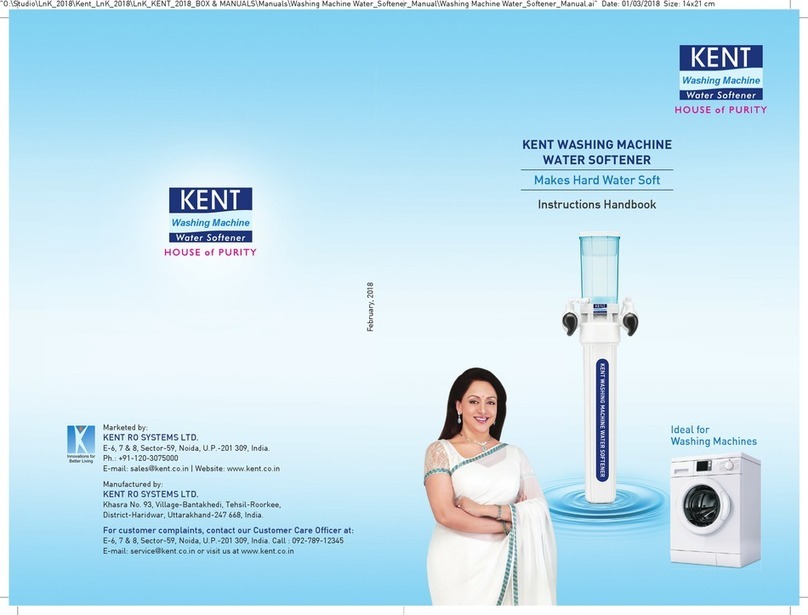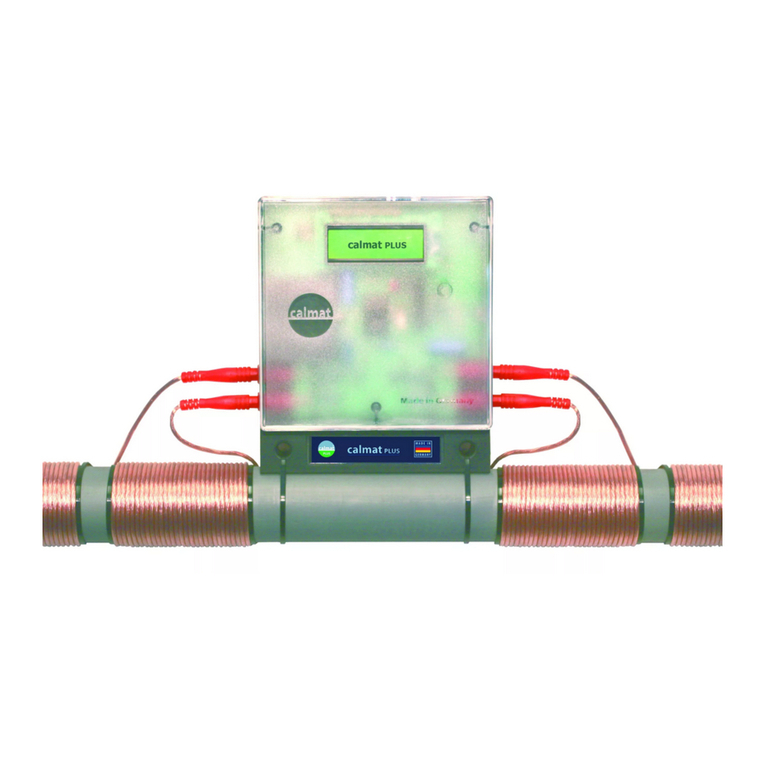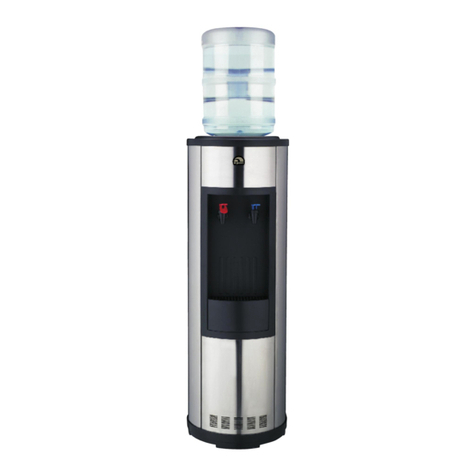Manuale d’istruzioni serie AL 9
ITALIANO
manuale
d’istruzioni serie AL
• Non installare in ambienti in cui è presente un evidente vio-
lazione delle norme di sicurezza elettrica, antinfortunistica
e/o igienica.
• La pressione idrica non deve essere inferiore a 0.2 Mpa (2
bar) o superiore a 0.8 Mpa (8 bar) (si consiglia almeno 3 o
4 bar).
• Nel caso la pressione idrica superi gli 8 bar occorre instal-
lare un riduttore di pressione.
• Se la pressione idrica è inferiore a 0.2 Mpa (2 bar) ci pos-
sono essere anomalie di funzionamento.
• Il sale in sacchi o in scatole non deve essere conservato in
zone umide o a contatto con il pavimento, quindi posizio-
narlo per esempio su un pallet in legno.
3.3 COLLEGAMENTO ALLA RETE IDRICA
Il collegamento con la rete idrica deve essere fatto in ottempe-
ranza con le norme vigenti, secondo le istruzioni del produtto-
re e da personale qualificato.
Durante l’istallazione oltre ad usare tubi, raccordi, valvole e
componenti conformi al DM 174/2004, preservare la loro
integrità igienica nella confezione originale fino al momento
del montaggio. È vietato usare materiali e componenti non
idonei al contatto con acqua potabile conservati in modo igie-
nicamente inadeguato in quanto potrebbero compromettere la
qualità dell’acqua trattata e l’apparecchiatura.
Vi consigliamo l’installazione descritta nella fig. 3, che pre-
vede un by-pass per evitare interruzioni d’acqua in caso di
fermo macchina per manutenzione all’addolcitore, e vi per-
metterà di utilizzare l’acqua nel vostro impianto, anche nel
caso in cui si debba fare manutenzione all’addolcitore.
Controllare che siano presenti i tappi di sicurezza igieni-
ca sulla entrata (INLET) e uscita (OUTLET) dell’apparec-
chiatura (fig.2), rimuoverli solo in fase di allaccio alla rete
d’acqua potabile.
3.3.1 RACCORDI RAPIDI
Le connessioni dei tubi con la valvola sono realizzate con
attacchi rapidi.
Per collegare un tubo occorre inserirlo fino in battuta, gli in-
serti metallici della connessione rapida impediscono al tubo
di fuoriuscire.
Per scollegare un tubo occorre scaricare l’eventuale pressio-
ne, quindi premere l’anello nero che lo circonda in prossimità
dell’inserimento e contemporaneamente sfilare il tubo (fig. 4).
Verificare che:
• i tubi d’entrata (fig. 3, G) e d’uscita (fig. 3, H) siano confor-
mi alle norme relative a “Tubi per acqua potabile”.
• il tubo d’entrata dell’acqua abbia un diametro interno di
almeno 8 mm.
Si consiglia di installare prima della macchina un filtro per la
filtrazione dell’acqua in ingresso (fig.3, G).
Installare sul tubo d’uscita una valvola di non ritorno (fig. 3, A)
(DVGW, DIN 1988 T2), per preservare l’addolcitore da even-
tuali ritorni di acqua calda che potrebbero danneggiarlo.
Prevedere un rubinetto per il prelievo dell’acqua in uscita, per
il controllo della durezza.
Collegare i tubi d’entrata e uscita dell’acqua ai rubinetti da
3/8”G o 3/4”G in dotazione con l’addolcitore (fig. 2 e fig. 3, D,
B) avvitandoli in modo sicuro.
Inserire i rubinetti nella valvola, fino in battuta (fig. 4).
Controllare che tutti i tubi siano liberi, non schiacciati e senza
strozzature.
3.4 COLLEGAMENTO ALLA RETE DELLO SCARICO
L’acqua che uscirà dallo scarico durante la rigenerazione,
deve essere convogliata attraverso il tubo flessibile (fig. 3, F)
di plastica Ø8 mm (compreso nella confezione) nello scarico
più vicino.
Spesso la causa del mal funzionamento degli addolcitori è
dovuto ad una difettosa istallazione di questo tubo (fig. 5, A).
Inserire il tubo di scarico nell’apposito alloggiamento (fig. 2,
DRAIN) e posizionare il tubo in un pozzetto facendo attenzione
che:
• se il punto di scarico è situato più in alto, è consentita
un’altezza massima di 1,8 metri a condizione che il tubo
non superi i 5 metri di lunghezza e la pressione della rete
sia di almeno 3 bar (fig. 6);
•
accertarsi che il tubo non venga schiacciato o piegato, l’ac-
qua al suo interno deve scorrere senza ostacoli (fig. 5, A);
• non collegare il tubo di scarico direttamente ad un sifone o
ad altre tubazioni di scarico, per evitare ritorni e contami-
nazioni nell’addolcitore
• mantenere il tubo di scarico sospeso e non immerso
nell’acqua del pozzetto
• assicurarsi che il tubo non fuoriesca quando l’addolci-
tore effettua la rigenerazione
3.5 COLLEGAMENTO ALLA SALAMOIA
L’installatore deve controllare che il tubo ed i raccordi di col-
legamento tra la valvola e la salamoia abbiano una perfetta
tenuta, per evitare infiltrazioni d’aria (fig. 8, A).
3.6 COLLEGAMENTO ALLO SCARICO DEL TROPPO PIENO
L’installazione della tubazione di troppo pieno (fig. 3, E) sul tino
salamoia, consentirà lo scarico di eventuali eccessi d’acqua,
causati da irregolari rabbocchi o da difetti di funzionamento.
Forare la salamoia a circa 10 cm sotto il coperchio (fig. 1, E)
con un foro da 17 mm di diametro e avvitare il raccordo di
troppo pieno (fig. 3, I).
Inserire il tubo flessibile verde in dotazione sul raccordo, quindi
collegare il tubo ad uno scarico posto più in basso rispetto al
raccordo, poiché l’acqua che eventualmente uscirà non sarà in
pressione ( fig. 5, B).
Si consiglia di non collegare il tubo di troppo pieno nello stesso
pozzetto dove è installato il tubo di scarico dell’addolcitore, per
evitare eventuali ritorni d’acqua in salamoia.
3.7 COLLEGAMENTO ALLA RETE ELETTRICA
Assicurarsi che il voltaggio della rete elettrica sia compatibile
con quello della macchina.
Verificare la compatibilità tra la spina elettrica e la presa elet-
trica, in caso di incompatibilità farla sostituire da personale
qualificato, che accerterà anche se la sezione dei cavi sia
idonea alla potenza assorbita.
L’installazione deve essere conforme alla norma impianti
elettrici CEI 64.8.
L’apparecchio è costruito conforme ai requisiti essenziali di
sicurezza prescritti dalle direttive Europee:
• Direttiva Bassa Tensione 2006/95/CE
• Direttiva Compatibilità Elettromagnetica 2004/108/CE
• norme: EN 55014-1 (2006)+A1+A2, EN 55014-2
(1997)+A1+A2, EN 61000-3-2 (2006)+A1+A2, EN
610003-3 (2008)
• Norma di prodotto IEC/EN 60335-1:2010 per la Sicurezza
degli apparecchi elettrici di uso domestico e similari
• Utilizza componenti omologati UL/CSA/VDE
• È conforme alla normativa RoHS
Al termine dell’installazione, prima di aprire i rubinetti
